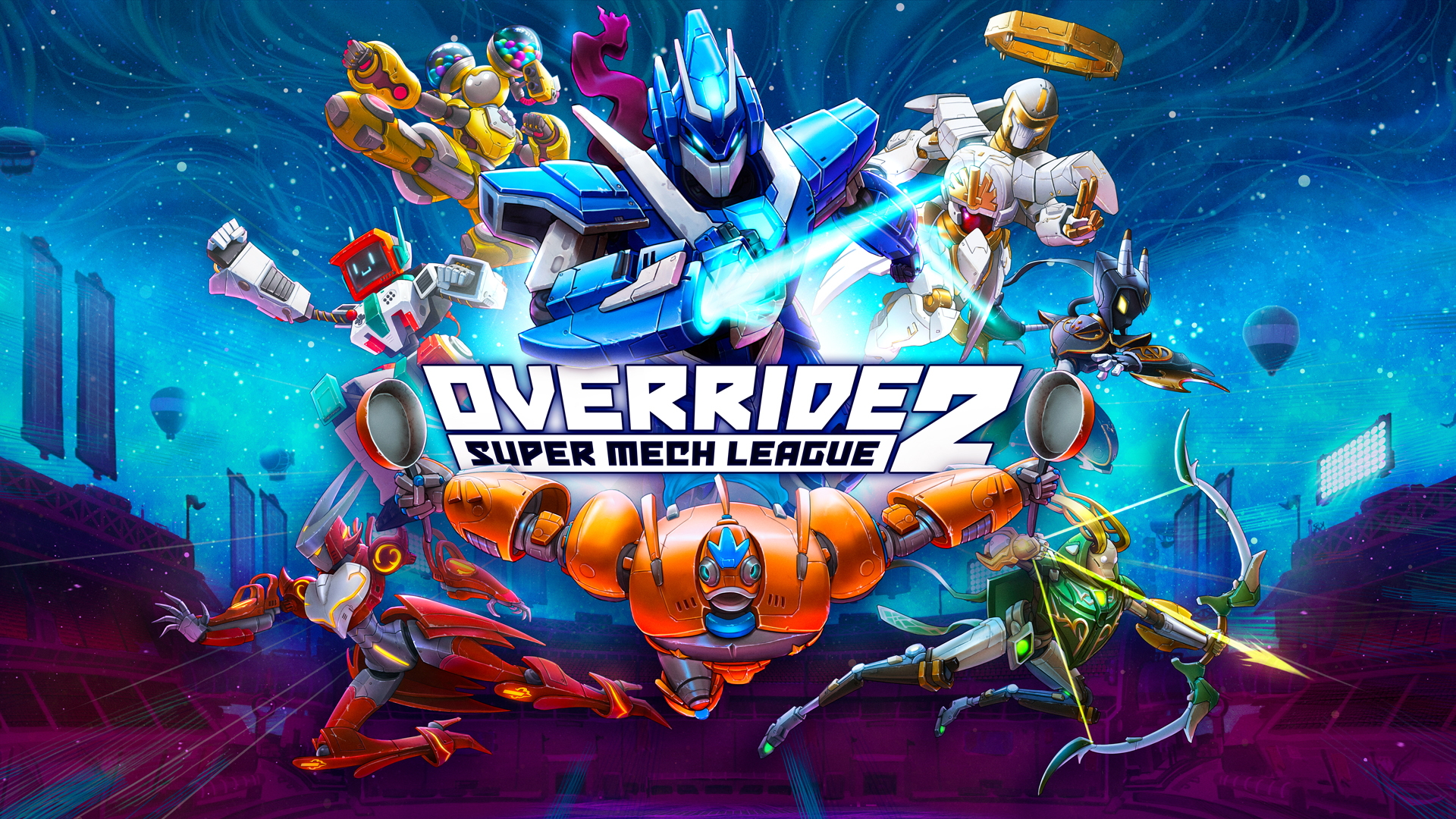[Review] Override 2: Super Mech League – Nintendo Switch
Override 2: Super Mech League
Nintendo Switch
Developed By: Modus Studios Brazil
Published By: Modus Games
Category: FIghting
Release Date: 12.22.20
A couple years ago I had the pleasure of reviewing the first Override. I enjoyed the heck out of the way it reminded me of one of my favorite Dreamcast titles, Tech Romancer, its fairly original combat mechanics, and its damn cool mechs. Override 2: Super Mech League tries to refine the formula a little bit while adding even more cool robots – including the star of Ultraman, Ultraman, in a bit of brilliant DLC branding – to somewhat mixed results. The gameplay stuff is mixed, I mean – the robots remain unimpeachably awesome.
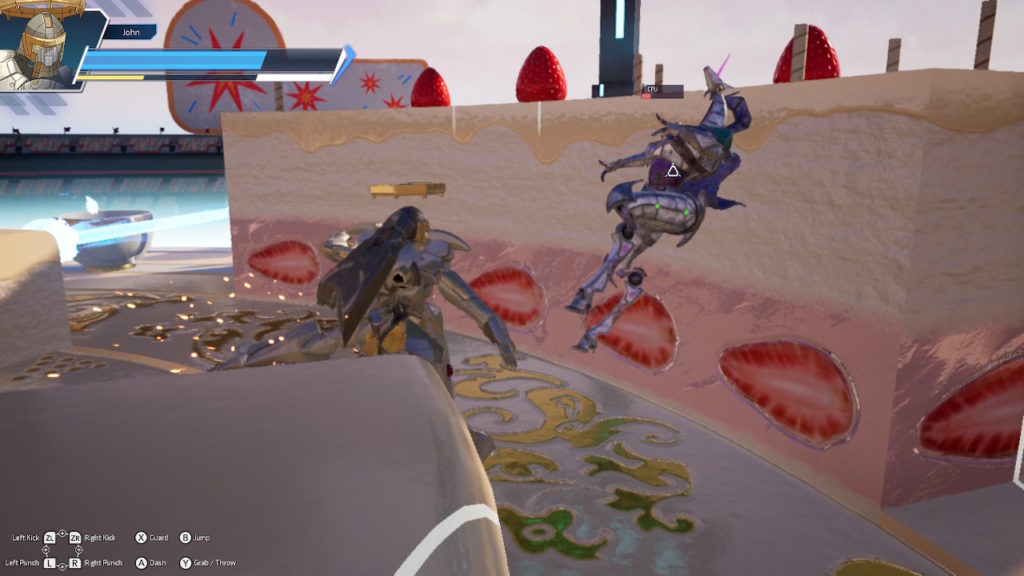
Standard Fighting Game Modes
Override 2 makes its first changes in the way its game modes are structured. The training mode is pretty much unchanged – you just play against a dummy AI and get to try out your mech’s moves. Versus lets you jump right into a 1v1 multiplayer match, whether online or locally (you can also set a bot as the other player, if you just want to practice with a live opponent). Quick play lets you jump online to find an opponent. Unfortunately, I frequently had trouble finding an opponent, so I don’t know how lively the online community for the game is.
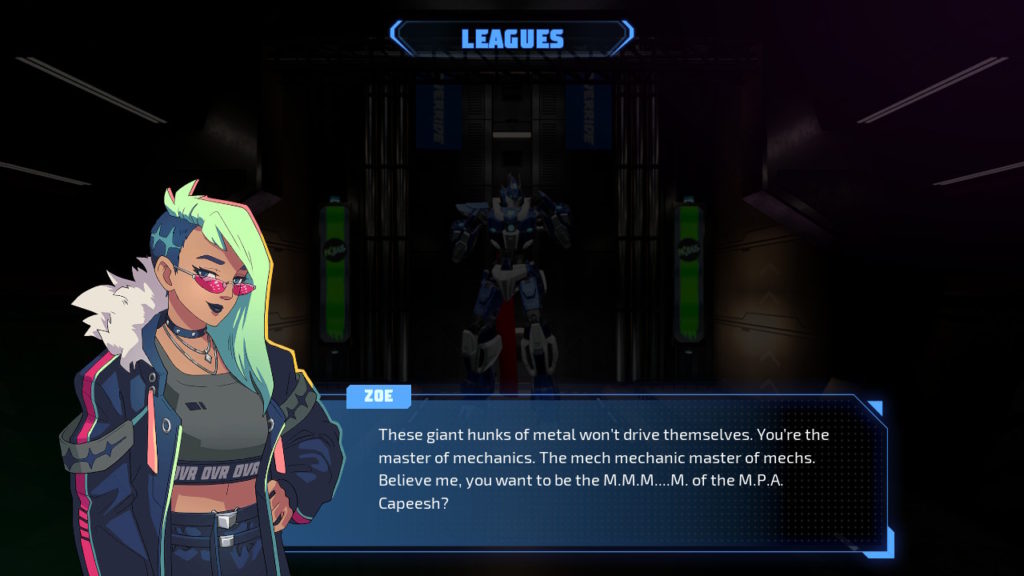
A League of Your Own
The final game mode is the Leagues Mode, which is the game’s single player campaign. It has a light setup where you are a rookie mech pilot trying to work your way up through the pro ranks, but it mostly just boils down to your manager expositing about her backstory. There are like ten different league types to master, each of which offers coins as a reward which can be used to unlock new mechs for use in single player mode as well as new character portrait icons. Each match has a bonus objective that awards additional money; it’s usually something simple, like “throw an enemy X number of times.” It’s an easy way to build up your winnings quickly. You can choose to play your League matches against bots or against other players online, which is a neat idea – but once again, it was hard to find opponents online.
The League mode also offers contracts with certain companies, which offer even more money if you hit certain conditions within the contracts time limit. The objectives are similar to bonus objectives, except with a larger target number. For instance, a match bonus might ask you to block ten hits, whereas a contract will ask you to block 100 hits within an hour. The good news is that this means you can spread the contract’s goal across multiple missions; the bad news is that the numbers required are so high you have to force yourself to do that one thing instead of just playing the game to win while a contract is active. It makes the game less fun to have to have such an emphasis on just one action for an extended period.
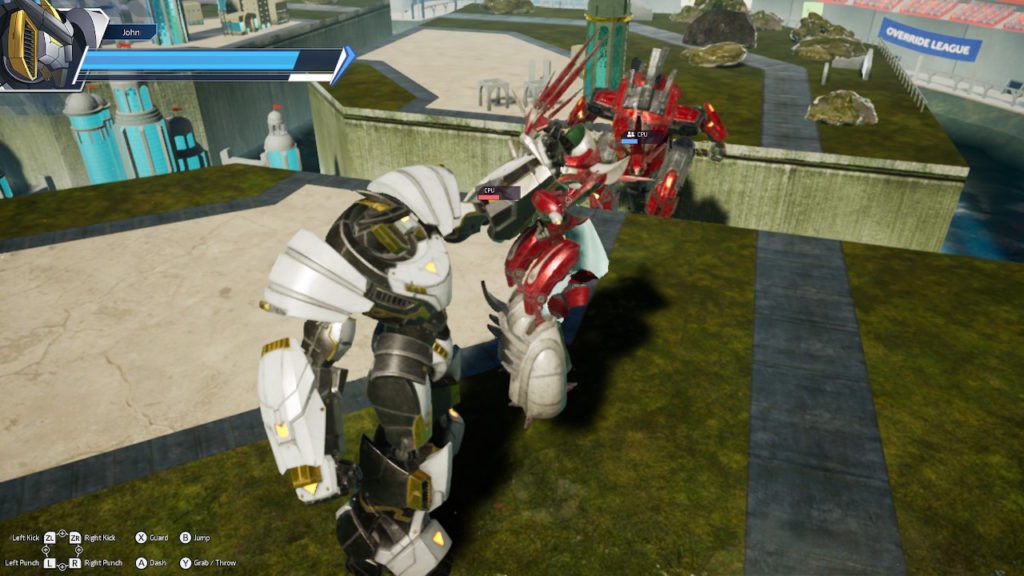
A Step Back
But my biggest complaint about the Leagues Mode is that it just isn’t as robust as the single-player mode from the first Override. While you can play as multiple mechs in Override 2’s Leagues, as opposed to being stuck with one mech for the whole story in the first game, you don’t get to do any customizing. In the first game, you could upgrade your mech’s stats as well as unlock new skins, neither of which are present here. You don’t even get P1/P2 palette swaps. It made the single-player mode feel less rewarding because it didn’t feel like you were actually unlocking anything of substance; you can select every mech from the get-go in non-Leagues game modes.
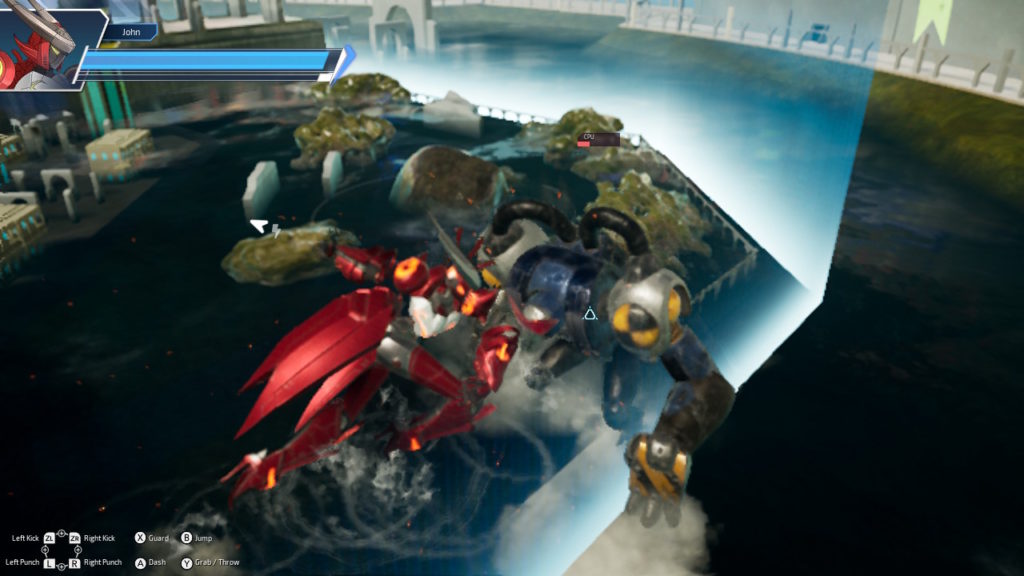
The Good and the Bad of Streamlined Mechanics
As far as the gameplay itself goes, Override 2 makes some welcome changes, and some unwelcome ones. First off, it gets rid of the heat bar from the first game, which restricted how many attacks you could string together. It made attack-spamming impossible – or at least less sustainable – which was cool, but it could also cut you off from finishing a combo, so its omission is net neutral overall. Second, your block is now omnidirectional instead of only blocking your mech’s front; this is unequivocally good for me, because I block a lot, especially against higher difficulty opponents. The last major change is the loss of the ability to hover by holding the jump button. Aiming and launching a rocket kick from a hovering position was one of my favorite moves from the first game, so it was kind of a bummer to see it go.
The basics of the combat system are largely the same as they were, with some modifications. You still attack with the four shoulder buttons. This time, however, the left buttons are for quick attacks and the right side are for heavy attacks, whereas before each trigger controlled a corresponding limb. This makes combat somewhat more strategic, as heavy attacks have longer windups, so you have to plan your combos accordingly. Your special attacks no longer take up bars from your special meter, meaning you can use them as often as you want. The four-bar special meter is replaced by a single ultimate attack meter. You no longer fill your ultimate meter by fighting, either; it can only be charged if you stand inside special charging areas that randomly pop up around the battlefield. Furthermore, the ultimate bar shrinks as you lose health, which makes for a handy way to turn a match around if you happen to be struggling.
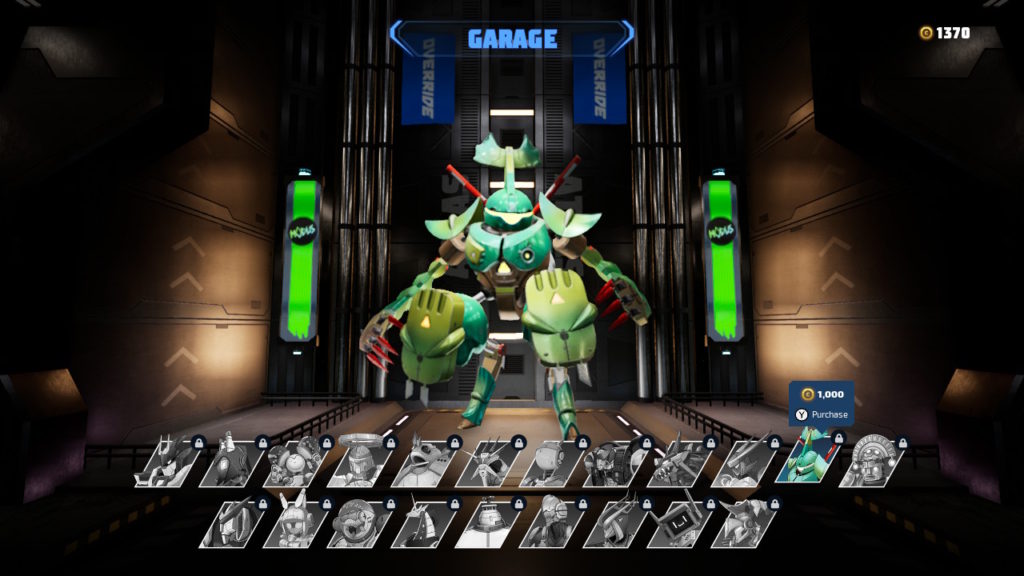
The Mechs Still Look Great
As I mentioned in the open, the main attraction for me in any mech game is cool robots, and Override 2 delivers. My beloved Mirai is not in the game’s roster, which is a massive disappointment, but several of my faves from the first game, including Setesh, Contessa, and Metageckon are available. The new additions are pretty darn cool as well, so full points for character design were awarded. The battlegrounds are of higher quality than the first game, which is nice to see. The graphics overall don’t seem to be as sharp as they are on other consoles, but they still look good both docked and undocked. The only major issue is the slowdown that happens frequently when an effects-heavy attack gets unleashed. This can be compounded by lag issues when playing online.
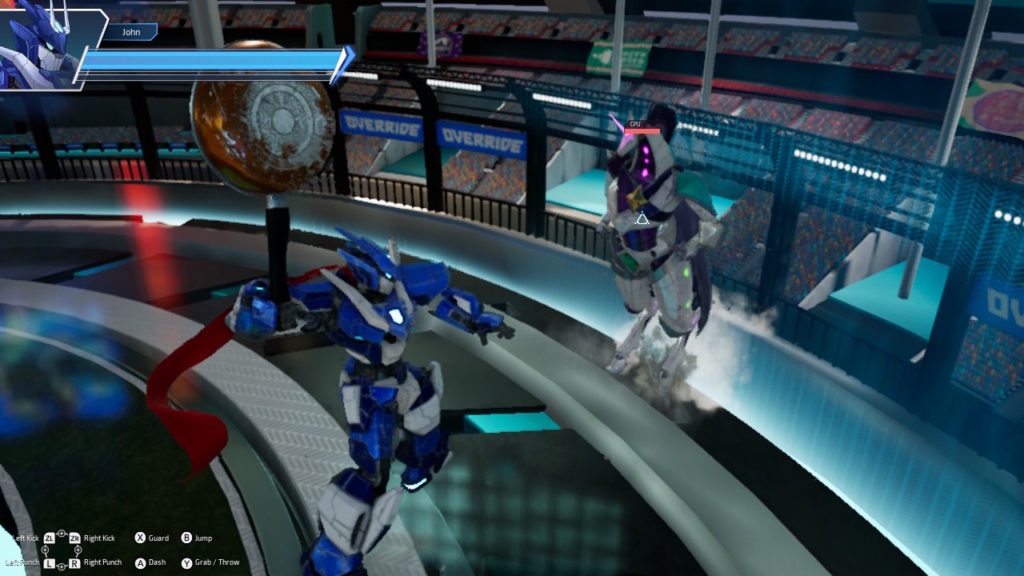
It Didn’t Override Its Predecessor
Override 2: Super Mech League tries a few new things with the gameplay formula it built in the first game. The overhauled combat system declutters the screen by taking away heat bars and segmented special meters, which streamlines things nicely. I lament the loss of the hover ability, but applaud the expansion of the guard radius. The single player campaign takes a step back in terms of immersion and satisfying rewards. Most crucially, however, the mechs are still cool as heck. Unfortunately, Override 2 overall feels like a step back for the series. Despite is expanded roster – and the option to play as Ultraman characters via DLC – the first game still offers the more satisfying experience.





Override 2: Super Mech League
Digital – $29.99
Follow Modus Games


The Switch Effect was graciously supplied a code for review purposes.

